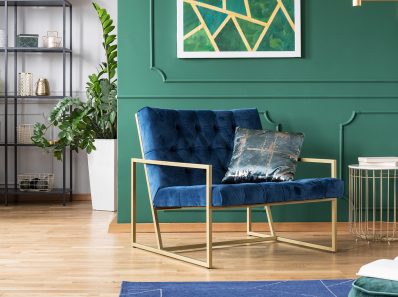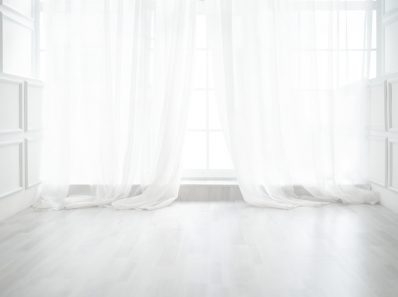A beautifully designed, functional living space – what an impact it has on our lives! Interior design’s power to revolutionise homes is undeniable.
Five vital elements work in unison, forming the basis of exceptional interior design: balance, proportion and scale, colour, lighting, and texture and pattern.
Let’s delve into each, sharing practical advice to weave them into your home and create a stunning, successful interior design.
Balance
Balance, the even distribution of visual weight within a space, is an interior design cornerstone. It imparts stability and harmony, preventing any area or object from overpowering the room. Symmetrical, asymmetrical, and radial balance are the three varieties.
Symmetrical balance, with elements mirrored around a central axis, oozes formality and elegance. In contrast, asymmetrical balance relies on the thoughtful arrangement of dissimilar objects or varying sizes and shapes, infusing a casual, dynamic ambience. Radial balance? That’s when elements radiate from a central point, giving an energetic, lively vibe.
To achieve balance, ponder the visual weight of furniture, artwork, and accessories. Spread them evenly, avoiding a cluttered or sparse look.
Proportion and Scale
Proportion and scale – two intertwined concepts in interior design. Proportion concerns the relationship between the size of elements within a space, whereas scale refers to an object’s size relative to the room’s size.
Harmony and well-designed spaces demand proper proportion and scale. Consider the size of furniture and accessories relative to one another and the room’s dimensions. A giant sofa in a tiny living room? Overwhelming. A small rug in a large room? Insignificant.
Choose room-appropriate items when selecting furniture and accessories. Additionally, create visual interest and balance by grouping objects of various sizes and heights.
Colour
Colour – such a powerful force in interior design! It sets the mood, evokes emotions and influences room size perception. Monochromatic, analogous, and complementary colour schemes offer various options.
A monochromatic scheme utilises shades and tints of a single hue for a sophisticated, cohesive appearance. Analogous schemes feature colours adjacent on the colour wheel, generating a calming, harmonious effect. Complementary schemes? Those are colours opposite each other on the colour wheel, producing a dynamic, vibrant contrast.
When choosing your home’s colour palette, mull over the desired atmosphere and mood, as well as room size and natural light. Experiment with shades and combinations to find your interior design’s perfect equilibrium.
Lighting
 Lighting – an interior design linchpin, shaping atmosphere and functionality. Ambient, task, and accent lighting are the three primary types. Ambient lighting offers general illumination; task lighting focuses on specific areas for tasks; accent lighting emphasises architectural features or artwork.
Lighting – an interior design linchpin, shaping atmosphere and functionality. Ambient, task, and accent lighting are the three primary types. Ambient lighting offers general illumination; task lighting focuses on specific areas for tasks; accent lighting emphasises architectural features or artwork.
Incorporate suitable lighting into your design, and witness your home’s transformation.
Select and arrange lighting based on each room’s purpose and activities. Combine ambient, task, and accent lighting to create a versatile, layered lighting scheme that enhances your interior design. To discover more about the importance of lighting in interior design, check out this useful blog post.
Texture and Pattern
 Texture and pattern – indispensable elements in interior design. They inject depth, visual interest, and personality into a space. Texture relates to surfaces and materials’ tactile quality, while pattern involves the repetition of shapes, lines, or colours.
Texture and pattern – indispensable elements in interior design. They inject depth, visual interest, and personality into a space. Texture relates to surfaces and materials’ tactile quality, while pattern involves the repetition of shapes, lines, or colours.
Combining various textures and patterns breathes life into a room, banishing monotony. Blend smooth and rough textures – a sleek leather sofa with a plush rug, perhaps – for contrast and variety. Mix patterns cautiously, considering scale, colour, and theme for a visually engaging, cohesive design.
When adding texture and pattern, start with key pieces and layer in extra elements gradually. Mind the overall balance and harmony, ensuring no single texture or pattern dominates the space.
The Takeaway
To sum up, the five key elements of successful interior design – balance, proportion and scale, colour, lighting, and texture and pattern – synergise to create a functional and beautiful living space. By understanding and weaving these principles into your home, you’ll make informed design choices that genuinely transform your surroundings.
Experiment with different element combinations and personalise your space to reflect your unique taste and style. Remember, interior design is an evolving process, and don’t be afraid to make adjustments and updates as your preferences and needs change. With a keen eye and attention to detail, you can create a captivating and harmonious home that brings you joy and comfort for years to come.
Wine pairings for afternoon tea
Divino unveils new summer menus overflowing with seasonal Italian favourites



